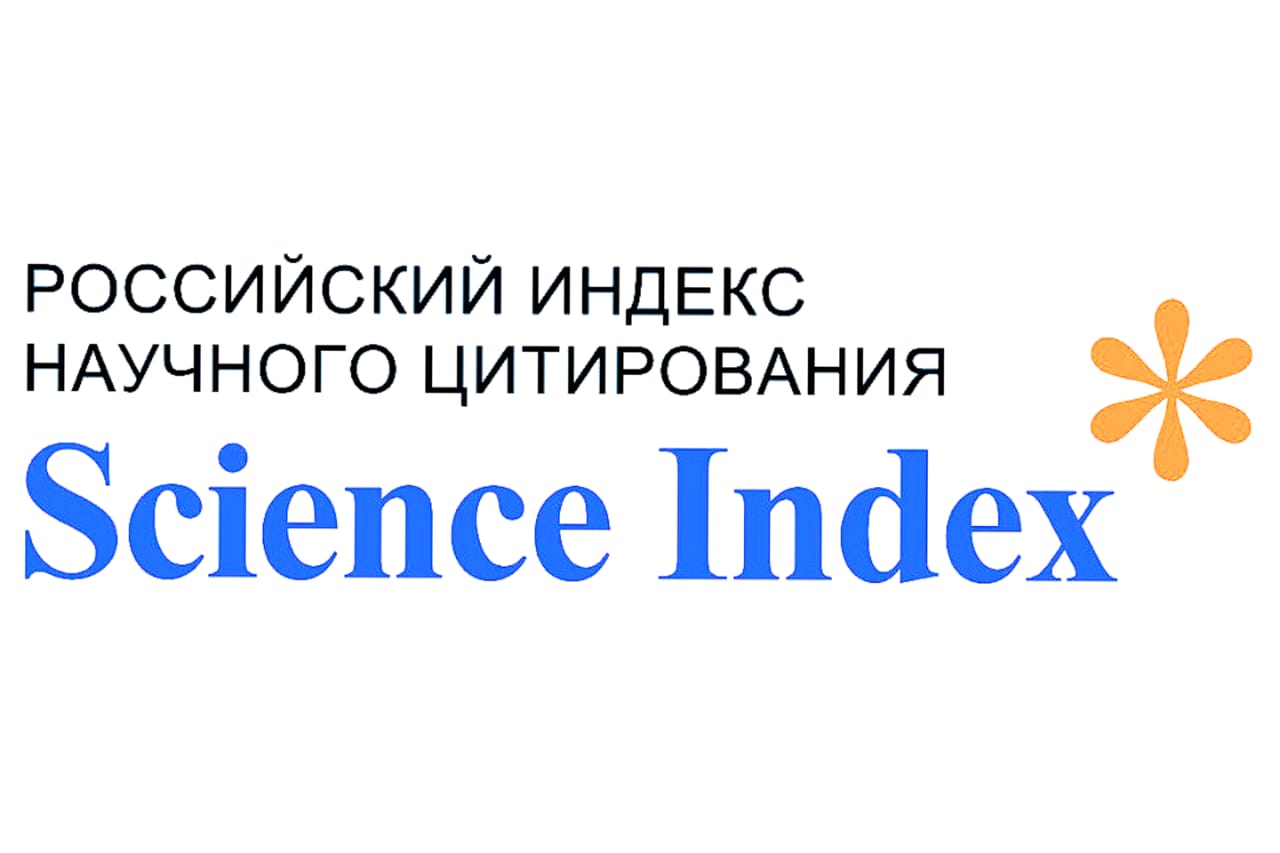Активность белкового компонента семян фасоли обыкновенной (Phaseolus vulgaris L.) казахстанской, российской и зарубежной селекции
136 67
Ключевые слова:
Phaseolus vulgaris L., лектины, ингибиторы протеиназ, трипсин, защита растений.Аннотация
В настоящее время одним из перспективных направлений развития современного сельскохозяйственного производства является применение комплексного подхода в защите растений и повышении уровня экологической безопасности. В связи с этим актуальными представляются вопросы разработки фитопрепаратов для сельского хозяйства и медицины на основе различных белковых компонентов. Проведено сравнительное изучение сортообразцов фасоли обыкновенной (Phaseolus vulgaris L.) казахстанской, российской и зарубежной селекции по содержанию белков, активности лектинов и ингибиторов протеиназ. Все изученные сортообразцы отличались высоким содержанием белка (23,2%-30,8%) и лектиновой активностью, которое зависело от особенностей генотипа и происхождения. При изучении активности лектинов 12 сортообразцов фасоли установлен широкий диапазон варьирования данного показателя. Максимальные различия между образцами достигали 17,5 мг/мл при крайних значениях признака 38,3 и 55,8 мг/мл. Наибольшей лектиновой активностью обладали 2 образца российской («Юбилейная белая», «Журавушка») и по одному казахстанской («Ассоль») и зарубежной («Иранская) селекции. Активность ингибиторов трипсина была примерно в два раза выше, чем химотрипсина, причем наибольшая активностью ингибиторов трипсинов и химотрипсинов отмечена для образцов с наибольшей активностью лектинов. На основе изучения активности белковых компонентов выделены перспективные образцы с наибольшим содержанием белка, активностью лектинов и ингибиторов протеиназ, которые могут служить ценным исходным материалом для получения высокопродуктивных и устойчивых к заболеваниям форм фасоли, а также потенциальными источниками белковых компонентов фасоли для исследования их действия на различных клеточных моделях, разработке биотехнологических подходов их выделения и дальнейшего использования в сельском хозяйстве.Библиографические ссылки
1. Vasconcelos IM, Oliveira JTA (2004) Antinutritional properties of plant lectins, Toxicon, 44:385-403.
2. Macedo MLR, Oliveira CFR and Oliveira CT (2015) Insecticidal Activity of Plant Lectins and Potential Application in Crop Protection, Molecules, 20:2014-2033.
3. Vasjukova NI, Ozeretskovskaya OL (2009) Jasmonate-dependent protective signaling in plant tissues [Zhasmonat-zavisimaja zashhitnaja signalizacija vtkanjahrastenij], Plant Physiology, 5:643-653. (In Russian)
4. Domash VI, Muntyan MS, Sharpio TP, Zabreiko SA, Shabashova TG and Sokolik AI (2009) The role of inhibitors of proteolytic enzymes in the formation of plant resistance to pathogens [Rol' ingibitorov proteoliticheskih fermentov v formirovanii ustojchivosti rastenij k fitopatogenam], News of the National Academy of Sciences of Belarus. Series of Biological Sciences. 1:47-50. (In Russian)
5. Zhao Y, Botella, MА, Subramanian L, Niu X, Nielsen SS, Bressan RA and Hasegawa, PM (1996), Two wound inducible soybean cysteine proteinase inhibitors have greater insect digestive proteinase inhibitory activities than a constitutive homolog , Plant Physiology, 111:4:1299-1306.
6. Moura DS and Ryan CA. Wound–inducible proteinase inhibitors in pepper (2001), Differential regulation upon wounding, systemin, and methyl jasmonate, Plant Physiology, 126:289-298.
7. Kolotilov VV (1989) Beans. Evaluation of samples for protein content and other economically valuable traits // Catalogue of VIR world collection. / Ed. Kolotilov VV, Podvezko VV, Buravtseva TV and Kolotilova AS. 495:24. (In Russian)
8. Luchick MD, Panasuck EN, Luchick AD (1981) Lectins [Lectini], Lviv, 156. (In Russian)
9. Agafonova OV, Zhmud EV, Krogulevich RE and Chernikov TS (2002) The content of flavonoids, protein and activity of trypsin inhibitors in the leaves of Trifolium pannonicum Jacq. grown in Novosibirsk [Soderzhanie flavonoidov,belka i aktivnost' ingibitorov tripsina v list'jah Trifolium pannonicum jacq., vypashhivaemogo v Novosibirske], Plant Resources, 38:86-92.(In Russian)
10. Vishnjakova MA (2012) Prospects for the use of genetic resources of grain legumes in the modern system of agriculture nature management [Perspektivy ispolzovanija geneticheskih resursov zernobobovyh v sovremennoj sisteme selskohozhajstvennogo prirodopolzovanija], Scientific and Production Magazine: Legumes and Cereal Crops., 3:25-29. (In Russian)
11. Renate KA (2009) Proteinase activities in the midgut of Western corn rootworm (Diabrotica virgifera virgifera), Journal of Invertebrate Pathology, 3:169-174.
12. Mosolov VV, Grigorieva LI and Valueva TA (2001) Proteinase inhibitors from plants as multifunctional proteins [Ingibitory proteinaz iz rastenij kak polifunkcional'nye belki], Applied Biochemistry and Microbiology, 37:6:643-650. (In Russian)
13. Sitnikov DM, Kotz SY (2009) Lectins participation in physiological processes in plants, Physiology and biochemistry of plants cultures [Uchastie lektinov v fiziologicheskih processah rastenii], 41:4:279-299.
14. Limongelli G (2000) Variation of seed storage proteins in landraces of common bean (Phaseolus vulgaris L.) from Basilicata, Southern Italy, Euphytica, 92:3:393-399.
15. Wang HF (2012) Genetic diversity and relationship of global faba bean (Vicia faba L.) germplasm revealed by ISSR markers, Theor. Appl. Gen., 124:5:789-97.
16. Powell KS (2001) Antimetabolic effects of plant lectins towards nymphal stages of the planthoppers Tarophagous proserpina and Nilaparvata lugens, Entomol. Exp. Appl., 99:71-77.
17. Couty A, Down RE, Gatehouse AMR, Kaiser L, Pham-Delegue MH and Poppy GM (2001) Effects of artificial diet containing GNA and GNA-expressing potatoes on the development of the aphid parasitoid, Aphidius ervi Haliday (Hymenoptera: Aphidiidae), J. Insect Physiol., 47:1357-1366.
18. Shahidi-Noghabi S, Van Damme EJM and Smagghe G (2008) Carbohydrate-binding activity of the type-2 ribosome-inactivating protein SNA-I from elderberry (Sambucus nigra) is a determining factor for its insecticidal activity, Phytochemistry, 69:2972-2978.
19. Shahidi-Noghabi S, Van Damme EJM and Smagghe G (2009) Expression of Sambucus nigra agglutinin (SNAI0) from elderberry bark in transgenic tobacco plants results in enhanced resistance to different insect species. Transgenic Res., 18:249-259.
20. Ceci LR,Volpicella M, Rahbe Y, Gallerani R, Beekwilder J, Jongma MA (2003), Selection by phage display of a variant mustand trypsin inhibitor toxic against aphids, Plant J., 33:557-566.
21. Mosolov VV, Grigorieva LI and Valueva TA (2001) Participation of proteolytic enzymes and their inhibitors in plant protection: review [Uchastie proteoliticheskih fermentov i ih ingibitorov v zashhite rastenij:], Applied Biochemistry and Microbiology, 37:2:131-140. (In Russian)
22. Reynoso-Camacho R, Ramos-Gomez M and Loarca-Pina G (2006) Bioactive components in common beans (Phaseolus vulgaris L.), Advances in Agricultural and Food Biotechnology, P. 217- 236.
23. Antonuk LP, Ignatov VV (2001) About the role of hemaggulination of wheat foetus in plant and bacterial cooperation: hypothesis and experimental data [O roli aggljutinina zarodysha pshenicy v rastitel'no-bakterial'nom vzaimodejstvii: gipoteza i jeksperimental'nye dannye v ee podderzhku], Plant Physiology, 48: 3:427- 433 (In Russian)
24. Valueva TA and Mosolov VV (2004) The role of inhibitors of proteolytic enzymes in the plant defense against pathogenic microorganisms [Rol ingibitoriv proteoleticheskih fermentov v zashhite rastenij], Biochemistry, 69:11:1600-1606. (In Russian)
25. Litvinenko NA, Adamovskaya VG, Molodchenkova OO and Motsnyi II (2002) Genetic resistance to fusarium wheat and its relation to the activity of trypsin inhibitor in grain [Geneticheskaja ustojchivost' pshenicy k fuzariozu i ee svjaz' s aktivnost'ju ingibitora tripsina v zerne], Cytology and Genetics, 36:2:30-34. (In Russian)
26. Adamovskaya VG, Molodchenkova OO, Linchevskiy AA and Tsiselskaya LJ (2005) Lectins of cell walls of barley seedlings in the defeat of Fusarium culmorum and effect of salicylic acid [Lektiny kletochnyh stenok prorostkov jachmenja pri porazhenii Fusarium culmorum i dejstvii salicilovoj kisloty], Physiology and Biochemistry of the cult. Plants, 37:3:267-274. (In Russian)
27. Kandelinskaya OL, Grishchenko ER, Domash VI, Sharpe TP, Anokhina VS, Sauk IB, Bryl EA, Golomako VV, Cybulski IY, Topunov AF, and Slepneva LM (2006) Biochemical aspects of resistance to fusarium blue lupine [Biohimicheskie aspekty ustojchivosti ljupina uzkolistnogo k fuzariozu], Vestnik of BSU, 2:1:36-39. (In Russian)
2. Macedo MLR, Oliveira CFR and Oliveira CT (2015) Insecticidal Activity of Plant Lectins and Potential Application in Crop Protection, Molecules, 20:2014-2033.
3. Vasjukova NI, Ozeretskovskaya OL (2009) Jasmonate-dependent protective signaling in plant tissues [Zhasmonat-zavisimaja zashhitnaja signalizacija vtkanjahrastenij], Plant Physiology, 5:643-653. (In Russian)
4. Domash VI, Muntyan MS, Sharpio TP, Zabreiko SA, Shabashova TG and Sokolik AI (2009) The role of inhibitors of proteolytic enzymes in the formation of plant resistance to pathogens [Rol' ingibitorov proteoliticheskih fermentov v formirovanii ustojchivosti rastenij k fitopatogenam], News of the National Academy of Sciences of Belarus. Series of Biological Sciences. 1:47-50. (In Russian)
5. Zhao Y, Botella, MА, Subramanian L, Niu X, Nielsen SS, Bressan RA and Hasegawa, PM (1996), Two wound inducible soybean cysteine proteinase inhibitors have greater insect digestive proteinase inhibitory activities than a constitutive homolog , Plant Physiology, 111:4:1299-1306.
6. Moura DS and Ryan CA. Wound–inducible proteinase inhibitors in pepper (2001), Differential regulation upon wounding, systemin, and methyl jasmonate, Plant Physiology, 126:289-298.
7. Kolotilov VV (1989) Beans. Evaluation of samples for protein content and other economically valuable traits // Catalogue of VIR world collection. / Ed. Kolotilov VV, Podvezko VV, Buravtseva TV and Kolotilova AS. 495:24. (In Russian)
8. Luchick MD, Panasuck EN, Luchick AD (1981) Lectins [Lectini], Lviv, 156. (In Russian)
9. Agafonova OV, Zhmud EV, Krogulevich RE and Chernikov TS (2002) The content of flavonoids, protein and activity of trypsin inhibitors in the leaves of Trifolium pannonicum Jacq. grown in Novosibirsk [Soderzhanie flavonoidov,belka i aktivnost' ingibitorov tripsina v list'jah Trifolium pannonicum jacq., vypashhivaemogo v Novosibirske], Plant Resources, 38:86-92.(In Russian)
10. Vishnjakova MA (2012) Prospects for the use of genetic resources of grain legumes in the modern system of agriculture nature management [Perspektivy ispolzovanija geneticheskih resursov zernobobovyh v sovremennoj sisteme selskohozhajstvennogo prirodopolzovanija], Scientific and Production Magazine: Legumes and Cereal Crops., 3:25-29. (In Russian)
11. Renate KA (2009) Proteinase activities in the midgut of Western corn rootworm (Diabrotica virgifera virgifera), Journal of Invertebrate Pathology, 3:169-174.
12. Mosolov VV, Grigorieva LI and Valueva TA (2001) Proteinase inhibitors from plants as multifunctional proteins [Ingibitory proteinaz iz rastenij kak polifunkcional'nye belki], Applied Biochemistry and Microbiology, 37:6:643-650. (In Russian)
13. Sitnikov DM, Kotz SY (2009) Lectins participation in physiological processes in plants, Physiology and biochemistry of plants cultures [Uchastie lektinov v fiziologicheskih processah rastenii], 41:4:279-299.
14. Limongelli G (2000) Variation of seed storage proteins in landraces of common bean (Phaseolus vulgaris L.) from Basilicata, Southern Italy, Euphytica, 92:3:393-399.
15. Wang HF (2012) Genetic diversity and relationship of global faba bean (Vicia faba L.) germplasm revealed by ISSR markers, Theor. Appl. Gen., 124:5:789-97.
16. Powell KS (2001) Antimetabolic effects of plant lectins towards nymphal stages of the planthoppers Tarophagous proserpina and Nilaparvata lugens, Entomol. Exp. Appl., 99:71-77.
17. Couty A, Down RE, Gatehouse AMR, Kaiser L, Pham-Delegue MH and Poppy GM (2001) Effects of artificial diet containing GNA and GNA-expressing potatoes on the development of the aphid parasitoid, Aphidius ervi Haliday (Hymenoptera: Aphidiidae), J. Insect Physiol., 47:1357-1366.
18. Shahidi-Noghabi S, Van Damme EJM and Smagghe G (2008) Carbohydrate-binding activity of the type-2 ribosome-inactivating protein SNA-I from elderberry (Sambucus nigra) is a determining factor for its insecticidal activity, Phytochemistry, 69:2972-2978.
19. Shahidi-Noghabi S, Van Damme EJM and Smagghe G (2009) Expression of Sambucus nigra agglutinin (SNAI0) from elderberry bark in transgenic tobacco plants results in enhanced resistance to different insect species. Transgenic Res., 18:249-259.
20. Ceci LR,Volpicella M, Rahbe Y, Gallerani R, Beekwilder J, Jongma MA (2003), Selection by phage display of a variant mustand trypsin inhibitor toxic against aphids, Plant J., 33:557-566.
21. Mosolov VV, Grigorieva LI and Valueva TA (2001) Participation of proteolytic enzymes and their inhibitors in plant protection: review [Uchastie proteoliticheskih fermentov i ih ingibitorov v zashhite rastenij:], Applied Biochemistry and Microbiology, 37:2:131-140. (In Russian)
22. Reynoso-Camacho R, Ramos-Gomez M and Loarca-Pina G (2006) Bioactive components in common beans (Phaseolus vulgaris L.), Advances in Agricultural and Food Biotechnology, P. 217- 236.
23. Antonuk LP, Ignatov VV (2001) About the role of hemaggulination of wheat foetus in plant and bacterial cooperation: hypothesis and experimental data [O roli aggljutinina zarodysha pshenicy v rastitel'no-bakterial'nom vzaimodejstvii: gipoteza i jeksperimental'nye dannye v ee podderzhku], Plant Physiology, 48: 3:427- 433 (In Russian)
24. Valueva TA and Mosolov VV (2004) The role of inhibitors of proteolytic enzymes in the plant defense against pathogenic microorganisms [Rol ingibitoriv proteoleticheskih fermentov v zashhite rastenij], Biochemistry, 69:11:1600-1606. (In Russian)
25. Litvinenko NA, Adamovskaya VG, Molodchenkova OO and Motsnyi II (2002) Genetic resistance to fusarium wheat and its relation to the activity of trypsin inhibitor in grain [Geneticheskaja ustojchivost' pshenicy k fuzariozu i ee svjaz' s aktivnost'ju ingibitora tripsina v zerne], Cytology and Genetics, 36:2:30-34. (In Russian)
26. Adamovskaya VG, Molodchenkova OO, Linchevskiy AA and Tsiselskaya LJ (2005) Lectins of cell walls of barley seedlings in the defeat of Fusarium culmorum and effect of salicylic acid [Lektiny kletochnyh stenok prorostkov jachmenja pri porazhenii Fusarium culmorum i dejstvii salicilovoj kisloty], Physiology and Biochemistry of the cult. Plants, 37:3:267-274. (In Russian)
27. Kandelinskaya OL, Grishchenko ER, Domash VI, Sharpe TP, Anokhina VS, Sauk IB, Bryl EA, Golomako VV, Cybulski IY, Topunov AF, and Slepneva LM (2006) Biochemical aspects of resistance to fusarium blue lupine [Biohimicheskie aspekty ustojchivosti ljupina uzkolistnogo k fuzariozu], Vestnik of BSU, 2:1:36-39. (In Russian)
Загрузки
Как цитировать
Zhumabaeva, B. A., Djangalina, E. D., Aytasheva, Z. G., Lebedeva, L. P., & Dauletbaeva, S. B. (2016). Активность белкового компонента семян фасоли обыкновенной (Phaseolus vulgaris L.) казахстанской, российской и зарубежной селекции. Experimental Biology, 66(1), 58–66. извлечено от https://bb.kaznu.kz/index.php/biology/article/view/1161
Выпуск
Раздел
ФИЗИОЛОГИЯ И БИОХИМИЯ РАСТЕНИЙ











